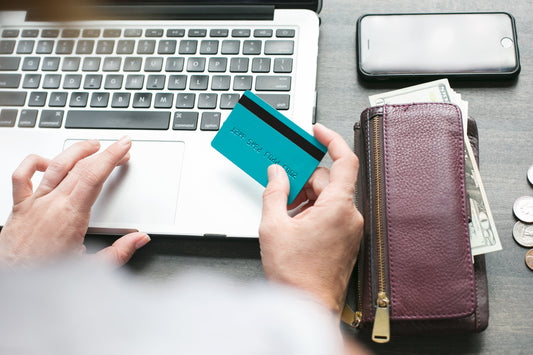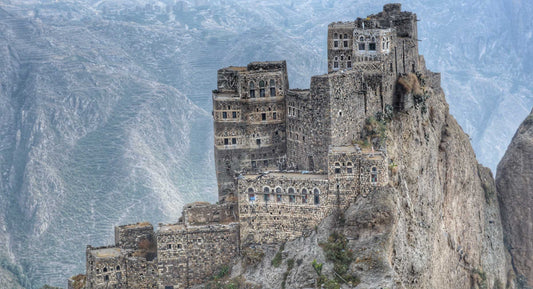OK, I have a confession. I really, really want a fancy home espresso machine in my kitchen. Unfortunately, I’ve not quite worked out how I would fit it into the space and more importantly, I haven’t yet won the argument with my wife that it would be a sensible financial investment! And so, cue sad music, I have to make do with my trusty coffee dripper collection, which admittedly I absolutely love, and just so happens to make an awesome cup of coffee. Coffee enthusiasts know that brewing the perfect cup of coffee involves more than just dumping grounds into a coffee maker, adding water or hitting a button, and hey presto, a delicious coffee appears. It's about precision, control, and extracting the most flavour from your beans. In this comprehensive guide, we'll delve into the world of coffee drippers, answering common questions, exploring different brewing techniques, discussing coffee filters and machines, delving into coffee consumption and culture, and even tackling the specifics of coffee quantity and measurement. It is a mini homage to the humble coffee dripper, which is what I always recommend to friends wanting to enter the wonderful world of specialty coffee.
General Coffee Maker and Dripper Questions
Why Should You Consider Buying a Coffee Dripper?
Coffee drippers, also known as pour-over brewers, are probably the most accessible and easy to use coffee maker out there. You can pick one up for less than £10, so they’re definitely within most budgets, but as importantly they offer unparalleled control over the brewing process and are loved by most coffee professionals. Unlike automatic coffee makers, which follow a preset recipe, drippers allow you to adjust variables such as water temperature, pouring technique, and brew time, resulting in a customized cup tailored to your preferences. It’s easy to make small adjustments ensuring that the coffee is just as you like it.
Which Coffee Maker Is the Best?
The "best" coffee maker is very subjective and depends on your individual preferences. While automatic drip machines offer convenience, coffee drippers provide greater control and the ability to experiment with different brewing parameters. But even just within coffee drippers you have tonnes of options to pick from that suit all budgets, have different aesthetics and perform slightly differently to each other. Check out some of our product reviews to see which ones we have tried and recommend.
What Are the Benefits of Using a Coffee Dripper Over Other Brewing Methods?
Coffee drippers are great for giving amazing control over the brewing process and often result in a far better cup of coffee than many automatic bean to cup type machines. They’re also very simple to use once you know how and you will quickly be impressed by the results you can get from them. Added to that, they don’t cost a small fortune and can easily fit in a cupboard as they don’t take up too much space. Each coffee maker has different advantages and disadvantages, but we think that if you try a coffee dripper, you’re going to be pretty happy with the results.
Which Features Are Most Important in a Coffee Maker?
Key features to consider when choosing a coffee maker include brewing capacity, ease of use, it’s look and durability. Some coffee drippers are recommended by specialty baristas for whom micro-adjustments like the angle of the cone make a huge difference, but if you’re just getting started you probably don’t need to worry about these factors too much as you can get a decent cup of coffee from most coffee drippers on the market. Choose a coffee dripper with features that align with your brewing preferences and lifestyle.
What Should I Look for in Terms of Coffee Maker Capacity?
Coffee maker capacity refers to the amount of brewed coffee the coffee dripper can produce at once. Consider your household's coffee consumption habits and choose a dripper with an appropriate capacity to avoid wastage or frequent brewing. We’d recommend getting a slightly bigger one than just a 1 cup coffee dripper as you can always use less coffee if you’re only having a single cup.
How Important Is the Brewing Temperature in Coffee Makers?
Brewing temperature plays a crucial role in coffee extraction, affecting flavour, acidity, and body. Optimal brewing temperature typically ranges between 195°F and 205°F (90°C to 96°C) for most coffee drippers. We’ve got a full guide on the importance of water for brewing coffee if you want to learn more about it. And talking of water, if you’re using a coffee dripper you should definitely consider a gooseneck kettle. They just make it a lot easier to control the water flow and tend to be a lot less messy.
How Do You Use a Coffee Dripper?
Using a coffee dripper involves several steps:
- Place a paper filter in the dripper and rinse it with hot water to remove any paper taste.
- Add ground coffee to the filter, ensuring even distribution.
- Pour hot water over the coffee grounds in a circular motion, allowing them to bloom.
- Continue pouring water gradually, maintaining a consistent flow rate.
- Allow the coffee to drip through the filter into a carafe or mug.
- Enjoy your freshly brewed cup of coffee.
What Is the Best Coffee Dripper in the UK?
The best coffee dripper in the UK varies depending on individual preferences and brewing requirements. Popular options include the Hario V60, Chemex, and Kalita Wave, each offering unique features and brewing characteristics.

Coffee Types and Brewing Techniques
What Is Filter Coffee?
Filter coffee, also known as drip coffee, is brewed by pouring hot water over ground coffee beans contained in a filter. The water extracts flavour compounds from the coffee grounds as it passes through, resulting in a flavourful and aromatic brew.
Why Is Filter Coffee the Best?
Filter coffee is favoured for its clean taste, clarity of flavour, and ability to highlight the nuanced characteristics of different coffee beans. Unlike other brewing methods that may impart bitterness or sediment, filter coffee offers a smooth and balanced drinking experience.
What Are the Different Roast Levels for Coffee?
Coffee beans are typically roasted to varying degrees, resulting in different roast levels:
- Light roast: Light brown in colour, light roasts let the coffee beans’ natural flavours come to the fore and have a higher acidity.
- Medium roast: Medium brown in colour, offering a balanced flavour profile with slightly less acidity.
- Dark roast: Dark brown to almost black. They are low acidity but much of the natural flavours of the beans are lost to roast flavours.
How Do Roast Levels Affect the Flavour of Coffee?
Roast levels influence the flavour profile of coffee, with lighter roasts emphasizing bright acidity and fruity notes, while darker roasts develop rich, caramelized Flavors with less acidity and more bitterness. When roasting lighter, the coffees’ natural flavour profile will be more evident whereas the longer the coffee has been roasted, these will be less evident. Dark roasted coffee beans will look shinier as they naturally release oils the longer they have been roasted. If you’re interested in the unique tastes of the origin, we would recommend trying lighter or medium roasts.
What Is the Optimal Water Temperature for Brewing Coffee?
The optimal water temperature for brewing coffee ranges between 195°F and 205°F (90°C to 96°C). Water that is too hot can scald the coffee grounds, while water that is too cold may under-extract, resulting in a weak and underwhelming brew. Some kettles allow you to set a temperature but if you don’t have one that does this, you can either catch it just before it boils or let the water cool for a few minutes after its boiled to achieve the right temperature.
How Does Grind Size Affect the Quality of Brewed Coffee?
Grind size plays a crucial role in coffee extraction, with different grind sizes suitable for various brewing methods. Finer grinds are ideal for espresso machines, while slightly coarser grinds are preferred for drip coffee makers like coffee drippers. You can adjust the coarseness of grind if you feel that the coffee tastes under or over extracted depending on your preferred method or if you don’t have a grinder, make sure you select the right grind coarseness for the coffee maker you’re using when you purchase your coffee.

What Are the Common Mistakes People Make When Brewing Coffee at Home?
Common mistakes when brewing coffee at home include using stale beans, water-to-coffee ratio, inconsistent grind size, and neglecting brewing variables such as water temperature and extraction time. Trial and error are your friends especially when trying a new coffee bean.
Is Drip Coffee Better Than Other Types?
Whether drip coffee is better than other types of coffee is subjective and depends on individual preferences. Drip coffee offers convenience and consistency, and does not cost a small fortune to buy the equipment. We’d say it’s a pretty great place to get started if you’re wanting to learn about specialty coffee and try some amazing coffee beans.
Is Drip Coffee Served Cold?
Although most people associate coffee as a hot drink, with these warmer temperatures, there’s no reason why you can’t have it cold too. In fact, it’s a pretty refreshing, caffeine filled alternative and the flavours can really sing when it’s not served hot. Drip coffee can be served cold by either brewing it directly over ice or chilling it after brewing. Cold brew coffee, a popular variation, is made by steeping coarse coffee grounds in cold water for an extended period, resulting in a smooth and refreshing beverage.
Coffee Filters and Machines
Which Coffee Filter Is the Best?
The best coffee filter depends on personal preference and brewing method. Paper filters offer convenience and produce a clean cup, while metal filters are reusable and allow more oils to pass through, resulting in a fuller-bodied brew. Each coffee maker will have specific filters designed to fit them perfectly and we’d recommend that you try to use the correct one for your coffee dripper. That said, we’d all had that panic moment when we’ve run out and had to adapt and overcome until we’re able to restock on filter papers
What Are the Differences Between Paper and Metal Coffee Filters?
Paper filters trap coffee oils and sediment, resulting in a cleaner cup with less body. Metal filters allow oils to pass through, resulting in a richer and fuller-bodied brew with more sediment. Each type offers distinct advantages and flavour characteristics. Metal filters also have the added advantage of being reusable and therefore more environmentally friendly.
How Do You Clean a Reusable Coffee Filter?
To clean a reusable coffee filter, rinse it thoroughly under running water to remove coffee residue. For deeper cleaning, soak the filter in a solution of warm water and mild dish soap, then rinse and air dry before reuse.
What Impact Do Different Filters Have on the Taste of Coffee?
Different filters can affect the taste of coffee by influencing flavour extraction, body, and clarity. Paper filters produce a cleaner cup with less sediment, while metal filters allow more oils and fines to pass through, resulting in a richer and more robust flavour profile. You should rinse out your paper filter (in the coffee maker) before use to get rid of any papery flavours and as a top tip, doing so with hot water into your coffee maker helps to it heat up before using it, which help retain the temperature.
How Much Coffee Does a Drip Machine Use?
The amount of coffee used in a drip machine depends on the desired brew strength and the machine's brewing capacity. A common ratio is one to two tablespoons of coffee per six ounces of water, but individual preferences may vary.
Coffee Consumption and Culture
Where Does Coffee Grow?
Coffee is grown in tropical regions around the world, primarily in countries located along the equator known as the Coffee Belt. Major coffee-producing countries include Brazil, Colombia, Ethiopia, and Vietnam.

Who Drinks the Most Coffee in the World?
The consumption of coffee varies by country and culture, but Scandinavian countries like Finland, Norway, and Sweden consistently rank among the top consumers per capita. Coffee consumption is also prevalent in countries like the United States, Brazil, and Italy.
Which Country Consumes the Most Coffee Per Capita?
The title of the highest coffee-consuming country per capita often fluctuates, with Nordic countries like Finland, Norway, and Iceland frequently topping the list. These countries have a strong coffee culture and consume coffee throughout the day.
What Are the Health Effects of Drinking Coffee?
Moderate coffee consumption has been associated with several health benefits, including improved cognitive function, reduced risk of certain diseases like Parkinson's and Alzheimer's, and enhanced physical performance. However, excessive coffee intake may lead to side effects like insomnia, anxiety, and digestive issues.
How Does Coffee Culture Vary Around the World?
Coffee culture varies significantly from one region to another, with each country or community having its unique traditions, rituals, and preferences. From the espresso-centric culture of Italy to the filter coffee obsession in Scandinavia, coffee plays a central role in social interactions and daily life worldwide.
What Are the Most Popular Single Origins?
Single-origin coffees, sourced from a specific region or farm, offer distinctive flavour profiles influenced by terroir, processing methods, and varietals. Common single-origin coffees include Ethiopian Yirgacheffe, Colombian Supremo, and Kenyan AA.
Coffee Quantity and Measurement
How Much Filter Coffee Should You Use per Cup?
The ideal coffee-to-water ratio for drip coffee brewing typically ranges is 1:16 or roughly 16 grams for an average sized cup. This is about one to two tablespoons of coffee per cup, depending on personal taste preferences and desired brew strength. If you find it’s too weak, add more coffee grounds and if it’s too strong, reduce it slightly.
So the humble coffee dripper comes with a double thumbs up recommendation from us. It’s a brilliant piece of kit and very affordable too.




